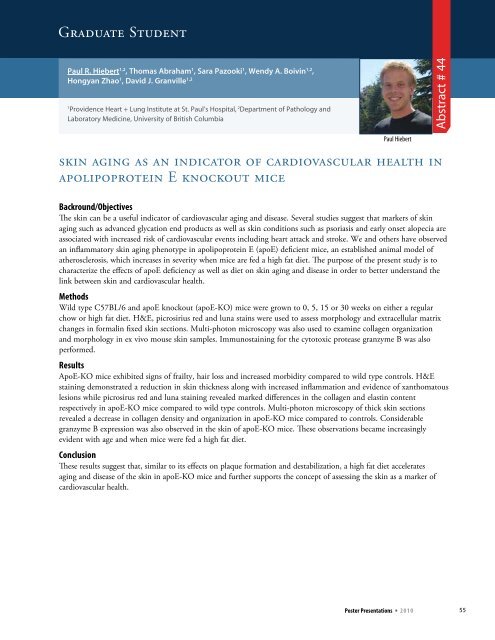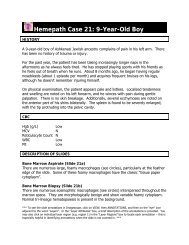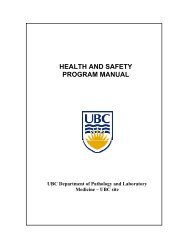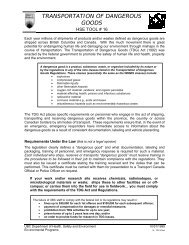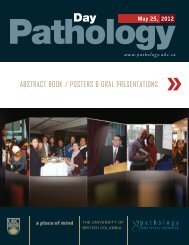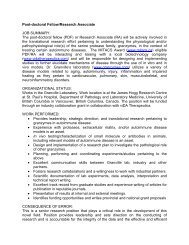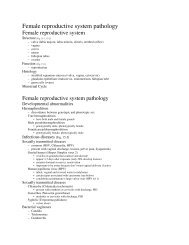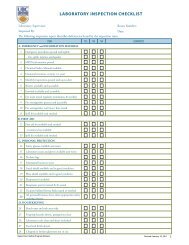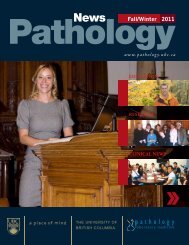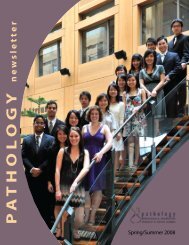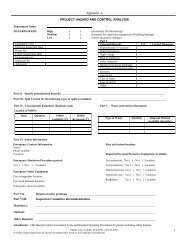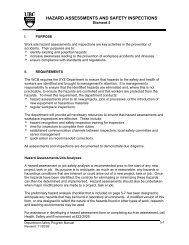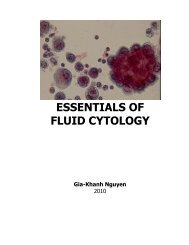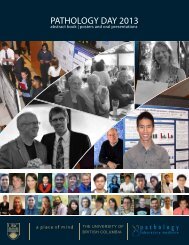Oral Presentations - Pathology and Laboratory Medicine - University ...
Oral Presentations - Pathology and Laboratory Medicine - University ...
Oral Presentations - Pathology and Laboratory Medicine - University ...
You also want an ePaper? Increase the reach of your titles
YUMPU automatically turns print PDFs into web optimized ePapers that Google loves.
Graduate StudentPaul R. Hiebert 1,2 , Thomas Abraham 1 , Sara Pazooki 1 , Wendy A. Boivin 1,2 ,Hongyan Zhao 1 , David J. Granville 1,21Providence Heart + Lung Institute at St. Paul’s Hospital, 2 Department of <strong>Pathology</strong> <strong>and</strong><strong>Laboratory</strong> <strong>Medicine</strong>, <strong>University</strong> of British ColumbiaAbstract # 44Paul Hiebertskin aging as an indicator of cardiovascular health inapolipoprotein E knockout miceBackround/ObjectivesThe skin can be a useful indicator of cardiovascular aging <strong>and</strong> disease. Several studies suggest that markers of skinaging such as advanced glycation end products as well as skin conditions such as psoriasis <strong>and</strong> early onset alopecia areassociated with increased risk of cardiovascular events including heart attack <strong>and</strong> stroke. We <strong>and</strong> others have observedan inflammatory skin aging phenotype in apolipoprotein E (apoE) deficient mice, an established animal model ofatherosclerosis, which increases in severity when mice are fed a high fat diet. The purpose of the present study is tocharacterize the effects of apoE deficiency as well as diet on skin aging <strong>and</strong> disease in order to better underst<strong>and</strong> thelink between skin <strong>and</strong> cardiovascular health.MethodsWild type C57BL/6 <strong>and</strong> apoE knockout (apoE-KO) mice were grown to 0, 5, 15 or 30 weeks on either a regularchow or high fat diet. H&E, picrosirius red <strong>and</strong> luna stains were used to assess morphology <strong>and</strong> extracellular matrixchanges in formalin fixed skin sections. Multi-photon microscopy was also used to examine collagen organization<strong>and</strong> morphology in ex vivo mouse skin samples. Immunostaining for the cytotoxic protease granzyme B was alsoperformed.ResultsApoE-KO mice exhibited signs of frailty, hair loss <strong>and</strong> increased morbidity compared to wild type controls. H&Estaining demonstrated a reduction in skin thickness along with increased inflammation <strong>and</strong> evidence of xanthomatouslesions while picrosirus red <strong>and</strong> luna staining revealed marked differences in the collagen <strong>and</strong> elastin contentrespectively in apoE-KO mice compared to wild type controls. Multi-photon microscopy of thick skin sectionsrevealed a decrease in collagen density <strong>and</strong> organization in apoE-KO mice compared to controls. Considerablegranzyme B expression was also observed in the skin of apoE-KO mice. These observations became increasinglyevident with age <strong>and</strong> when mice were fed a high fat diet.ConclusionThese results suggest that, similar to its effects on plaque formation <strong>and</strong> destabilization, a high fat diet acceleratesaging <strong>and</strong> disease of the skin in apoE-KO mice <strong>and</strong> further supports the concept of assessing the skin as a marker ofcardiovascular health.Poster <strong>Presentations</strong> * 2 0 1 055


